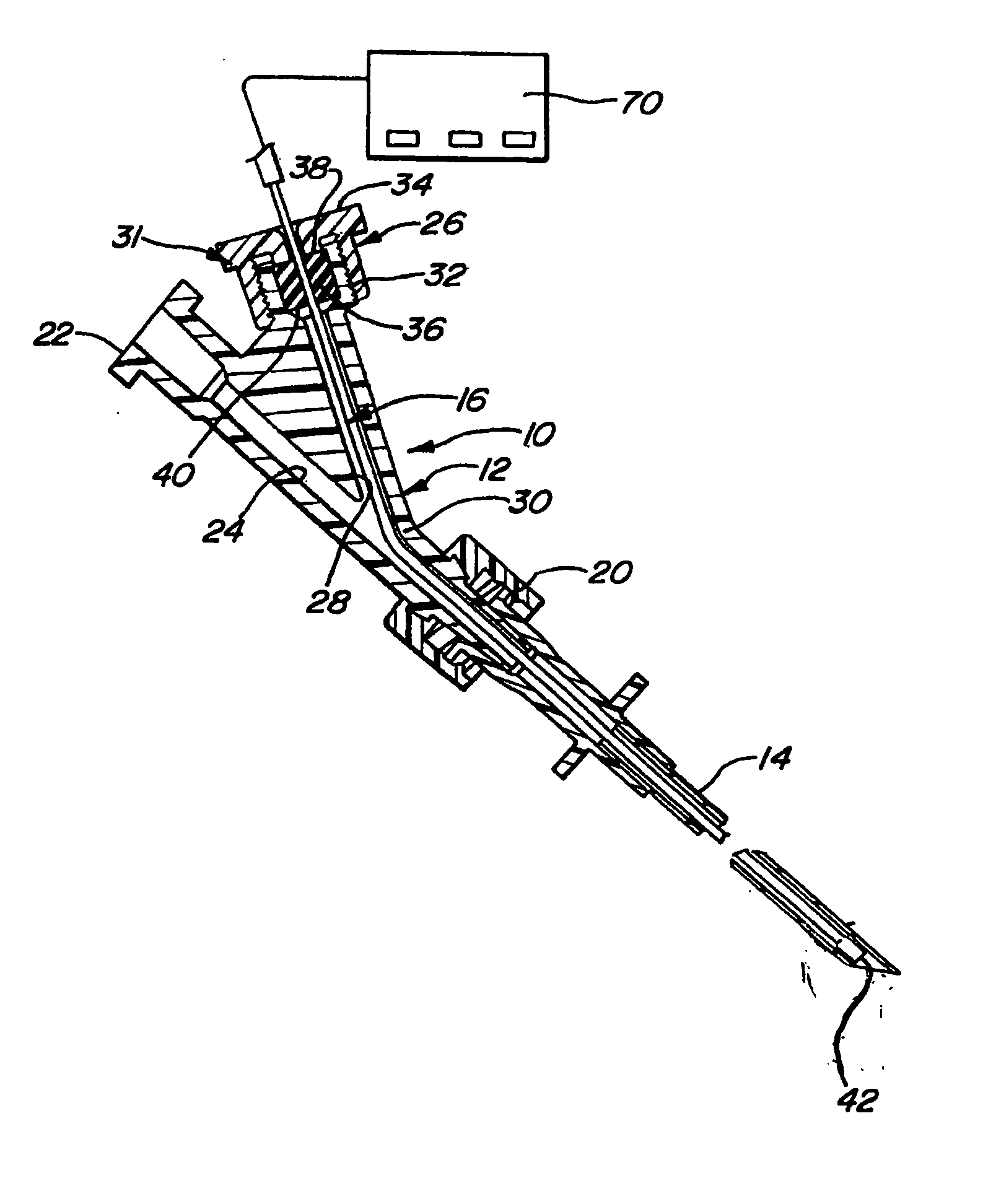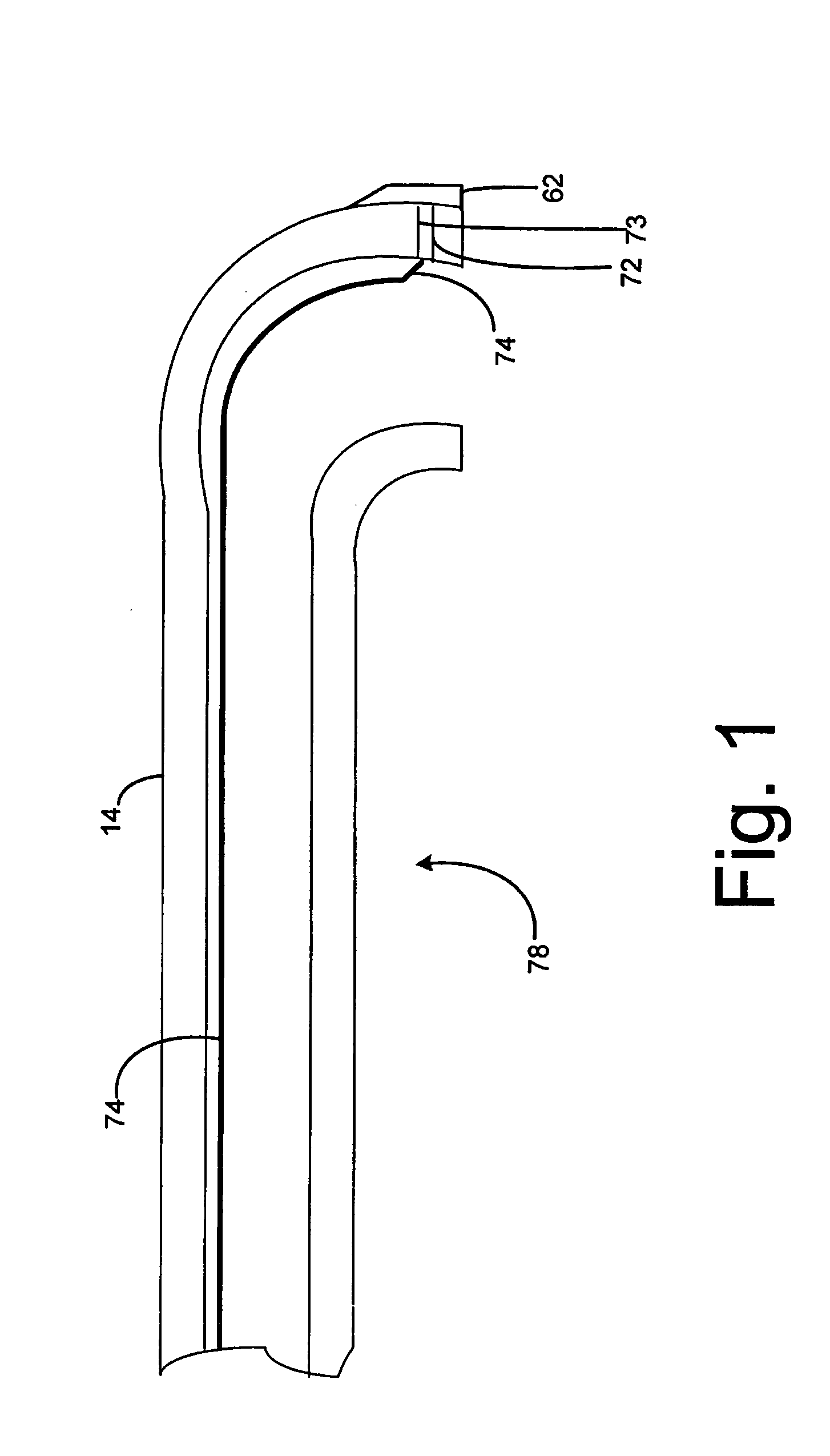Regional anesthetic method and apparatus
a regional anesthetic and needle technology, applied in the field of regional anesthetics and epidural needles, can solve the problems of insufficient epidural anesthesia, inability to accurately place epidural needles, and inability to accurately diagnose epidural injuries, etc., to achieve accurate and safe placement of regional anesthetic needles, increase the number of sounds or pitches, and improve the effect of accuracy and safety
- Summary
- Abstract
- Description
- Claims
- Application Information
AI Technical Summary
Benefits of technology
Problems solved by technology
Method used
Image
Examples
Embodiment Construction
[0025]FIG. 1 shows an embodiment of a regional anesthetic needle 78 according to the invention wherein a conventional Touhy needle 14 is modified by providing a piezo-electric crystal 62 on the distal portion of the needle, connected by wires 72, 73 through the front of the needle, and the wire 74 continuing through the lumen of the needle. The wire 74 can be adhered to the inside wall forming the lumen. In some embodiments conductive material is used rather than wire, for example conductive polymers can be adhered to the inside wall of the lumen.
[0026]FIG. 2 shows an embodiment of stylet 16 having a transducer 62 at the distal end. A solid center conductor 50 is surrounded by a dielectric tube 52. The conductor in this embodiment is surrounded by a Teflon dielectric tube, which provides improved noise suppression during operation. Conductor 50 can be composed of copper, silver, or silver-plated copper. A conductive adhesive 54 is coextruded over dielectric tube 52 which is a thin ...
PUM
 Login to View More
Login to View More Abstract
Description
Claims
Application Information
 Login to View More
Login to View More - R&D
- Intellectual Property
- Life Sciences
- Materials
- Tech Scout
- Unparalleled Data Quality
- Higher Quality Content
- 60% Fewer Hallucinations
Browse by: Latest US Patents, China's latest patents, Technical Efficacy Thesaurus, Application Domain, Technology Topic, Popular Technical Reports.
© 2025 PatSnap. All rights reserved.Legal|Privacy policy|Modern Slavery Act Transparency Statement|Sitemap|About US| Contact US: help@patsnap.com



